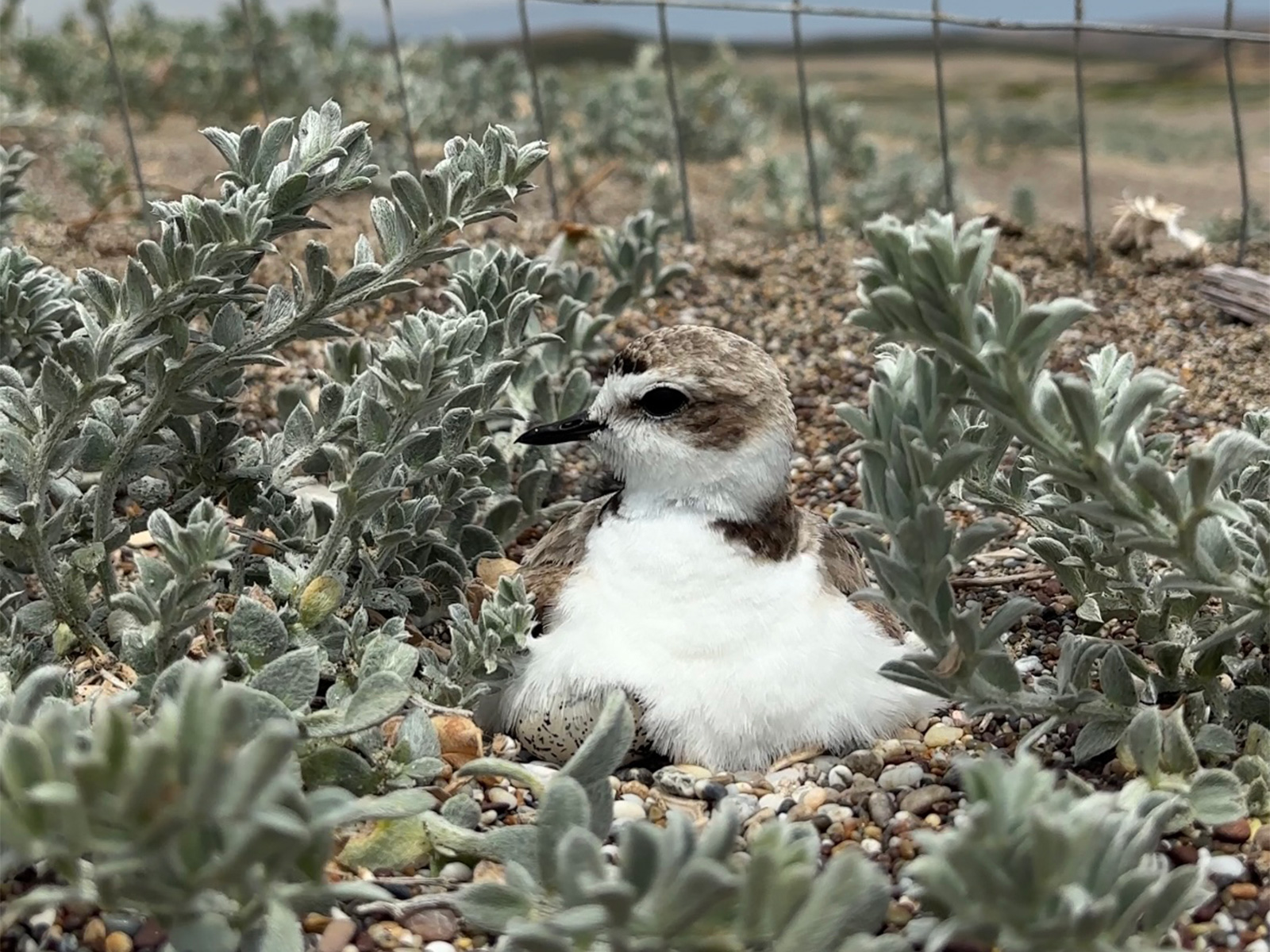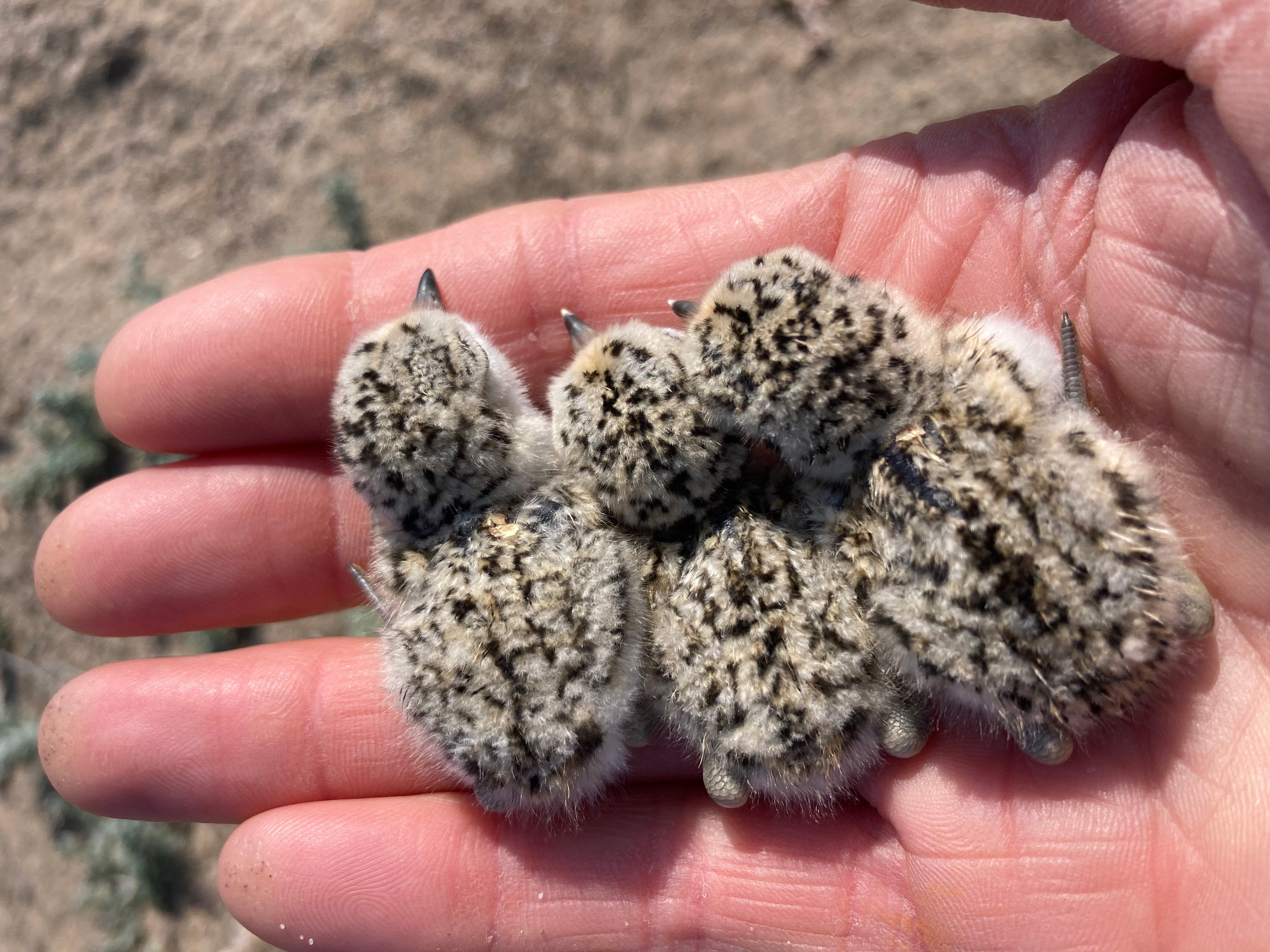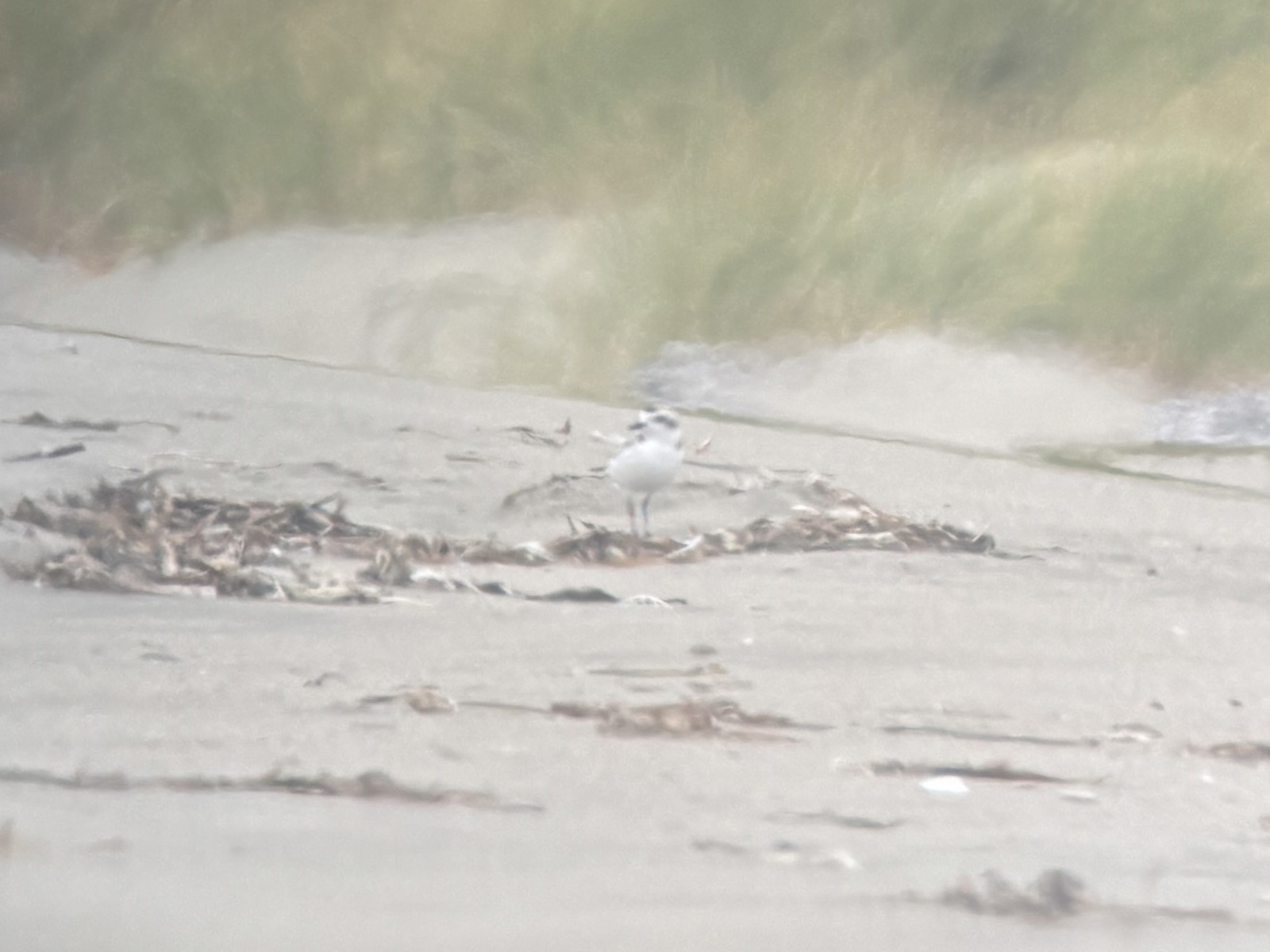Overview
Hello Ploverites!
The snowy plover breeding season is coming to a close with only two active snowy plover nests remaining—one in the Abbotts Lagoon restoration area and one on Kehoe Beach. With many nests hatched within the last two weeks, biologists are busy checking on the broods at all sites except for Limantour Spit and South Beach. There are up to 30 chicks running on the ground! Because it's the end of the breeding season, oftentimes, the female plover will stick around and help brood the chicks as well.
Our current fledge count has remained at 15 for a while, for a couple reasons. Some broods had evidently been lost, whether to the environment or to predators (namely ravens). On the other hand, broods have been proving difficult to locate this season, particularly at north beach where the beach is relatively narrow, making it difficult for biologists to hide from the protective males. Males have been expertly keeping their chicks hidden, even when the chicks are near fledged! This has often been happening to the point where biologists cannot ascertain exactly how many fledges a brood has because the male keeps them so well hidden in dune vegetation or in debris fields. Park biologists hope to resight some of these banded fledges in wintering flocks or when they are observed elsewhere along the coastline.
All that being said, with around 25 to 30 hatchlings running around on our beaches, we're likely to have many more fledges incoming! Stay tuned!
Winter flocks of snowy plovers continue to grow and can be found at the Abbotts Lagoon mouth, south Kehoe Beach, Limantour Spit, and North Beach. If you find them, please view them from afar and avoid disturbing them out of their "foxholes" or hiding places. If you find them being active and running around, keep an eye out for color bands on their legs!
If you have any questions, please feel free to contact Matt Lau via email.
Productivity Stats
- 41 total nests this season
- 2 active nest
- 27 hatched
- 11 failed nests
- 1 collected nest
- 25–30 chicks on PRNS beaches
- 15 chicks fledged
 A female snowy plover incubates one of the last nests of the season in the Abbotts Lagoon restoration area.
A female snowy plover incubates one of the last nests of the season in the Abbotts Lagoon restoration area.
Photo credit: NPS Photo / Matt Lau
 Newly banded western snowy plover chicks in the Abbotts Lagoon restoration area.
Newly banded western snowy plover chicks in the Abbotts Lagoon restoration area.
Photo credit: © Carleton Eyster, Point Blue Conservation Science
 Digiscoped photo of one of two snowy plover chicks from Drakes Spit, approximately a week from fledging.
Digiscoped photo of one of two snowy plover chicks from Drakes Spit, approximately a week from fledging.
Photo credit: NPS Photo / Matt Lau
 Digiscoped photo of the adult male of the Drakes Spit brood, av:rv (aqua, violet: red, violet).
Digiscoped photo of the adult male of the Drakes Spit brood, av:rv (aqua, violet: red, violet).
Photo credit: NPS Photo / Matt Lau
The National Park Service shall not be held liable for improper or incorrect use of the data described and/or contained herein. These data and related graphics (if available) are not legal documents and are not intended to be used as such. The information contained in these data is dynamic and may change over time. The National Park Service gives no warranty, expressed or implied, as to the accuracy, reliability, or completeness of these data. For more information: https://www.nps.gov/disclaimer.htm
